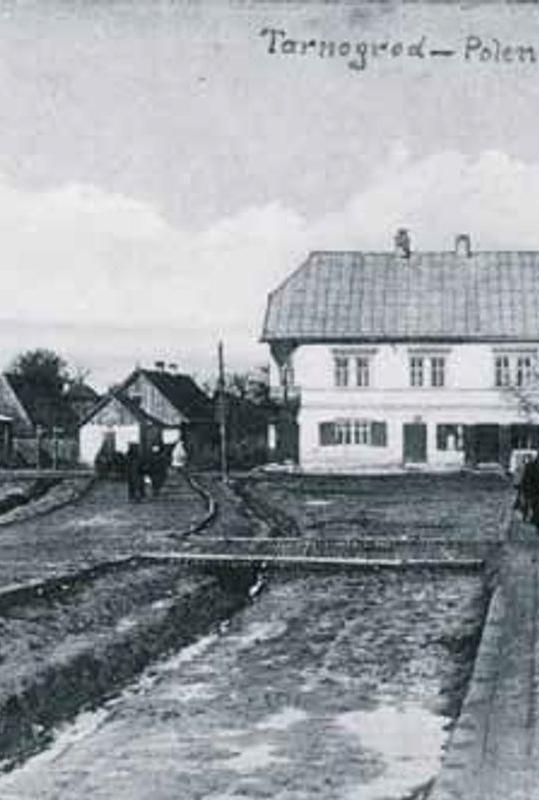Jews in Tarnogród - Until 1918. - In 1569. Tarnogród was granted the De non tolerandis Judaeis privilege by King Sigismund Augustus, prohibiting Jews from settling, building and buying houses within the city walls.However, it was not fully respected. As the inventories and surviving documents show, Jews had already settled in the city when it was founded.Later they owned two properties. The De non tolerandis Judaeis privilege was officially abolished in 1580. By King Stefan Batory. The king granted additional privileges to local Jews, allowing them to buy and build houses and engage in trade. This law was not enforced until 1589., when Tarnogród was incorporated into the Zamoyski Ordynacja, and its owner, Jan Zamoyski, allowed Jews to settle freely in the town. The Jewish quarter developed to the east of the main square.There, in the late 16th or early 17th century. municipal institutions were established. Perhaps as early as the 1680s., and certainly before 1627., the first wooden synagogue was built.In 1648. Khmelnytsky's Cossacks slaughtered almost all the Jews living in Tarnogrod (550 people).They burned the synagogue and houses belonging to Jews.Probably in the second half of the 17th century. a new municipality was created. In 1650., according to the tax register, in addition to 520 Christian families, 92 Jewish families lived in the city.In 1686.Jews owned or leased 83 houses. In the same year, a new brick synagogue, which survives to this day, was built.Thanks to the support of the Zamoyski family, the municipality developed both demographically and economically. Jews conducted extensive commercial activities, and representatives of the community held an important position at the Diet of the Four Lands. Due to the town's location in the border strip, Jewish settlement was banned in Tarnogrod between 1823 and 1862, despite which the number of community members grew steadily. In the 19th century. Many adherents among local Jews gained Hasidism. There were several shtibls bringing together followers of tzaddikim, among others. From Sieniawa and Belz.Interwar Period - During the interwar period, the Jewish population made up nearly 50% of Tarnogrod's population. The decrease in this number was influenced by mass labor emigration in the 1930s, triggered by, among other things, the nationwide economic crisis and rising anti-Semitic sentiment. In the 1920s and 1930s. Under the community's management were a synagogue, a communal beit ha- midrash, a rabbi's house, a shelter, a pre-burial house and a cemetery. There were private beit ha-midrash and numerous cheders.There were dozens of Jewish stores and a small printing press.Some of the wealthiest merchants profited from trading wood products and foodstuffs on a supra-local scale. Jewish entrepreneurs owned two mills, two sawmills, a parquet factory and a shingle factory.Some of these businesses went bankrupt in the 1930s. All major Jewish political parties and organizations had their representation here. In addition to the Agudah, whose representatives dominated the municipal institutions in numbers, the Bund and Zionist groups of various factions had many supporters, among which Poale Zion-Left and Mizrachi gained great public popularity. Numerous cultural and educational institutions operated under the auspices of political parties and organizations, including. The Jawne association, founded in the early 1930s, which runs a reading room and organizes readings and meetings, as well as, more popular and playing a greater role in the development of reading and the promotion of Jewish culture, the regional association, the Jawne Library. David Fryszman. Youth Zionist organizations included. Ha- Shomer ha-Cair. .
1. Tarnogród - Centrum miejscowości
Stories
Tarnogród - Center of the village
Jewish History Tours

Powered by Clio Muse Tours
Powered by Clio Muse Tours
